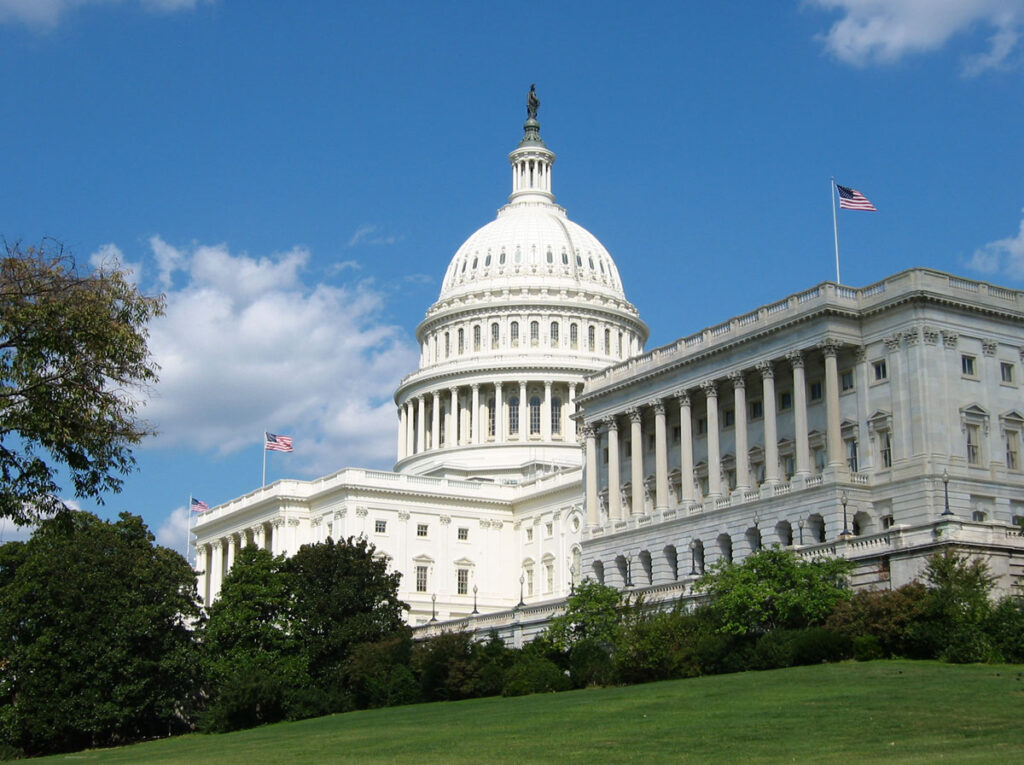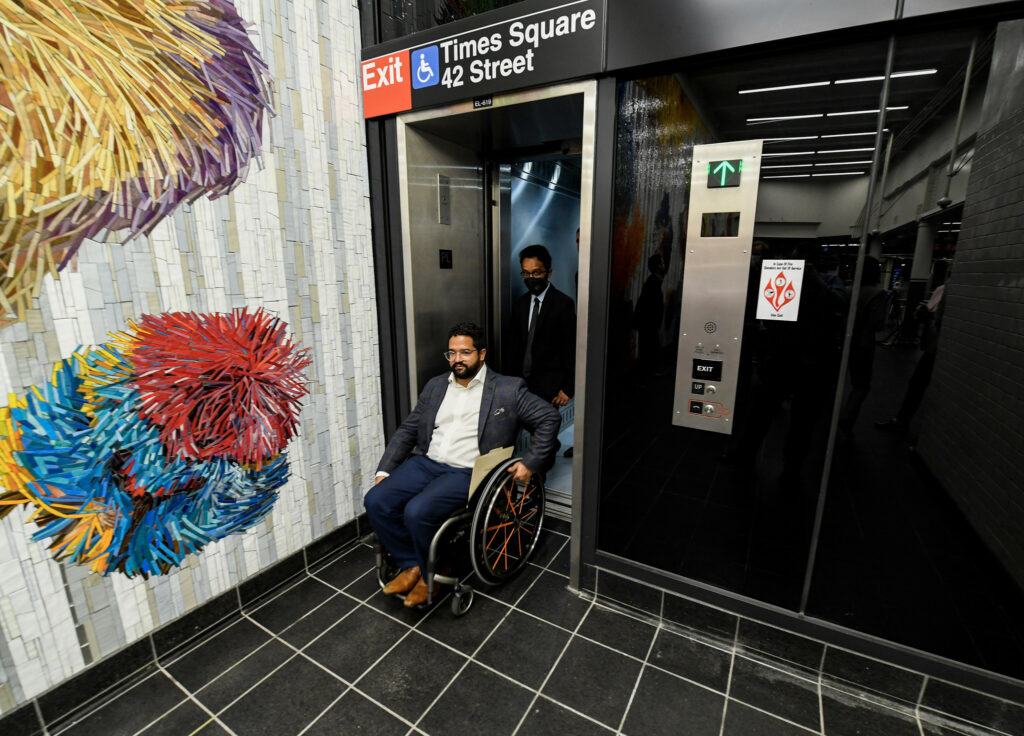
Following through on the ADA: The All Stations Accessibility Program

The Federal Transit Administration (FTA) released a notice of funding opportunity for the All Stations Accessibility Program (ASAP) that allocates $343 million in fiscal year 2022 (FY22). This program offers competitive grants to localities for the upgrading of legacy stations so they meet the standards of the Americans with Disabilities Act (ADA) of 1990.

Why do we need the All Stations Accessibility Program?
The transportation sector is a leading contributor to greenhouse gas emissions nationwide, and the majority of its contributions comes from driving in private vehicles. As we wrote in our report Driving Down Emissions, in order to reduce transportation emissions, we need to give people the option to travel outside of a car.
One such option is transit—like buses, subways, and commuter rail—but many barriers prevent people from replacing their daily car trips with transit trips. (Read our blog series for more information on the impact increased transit access and funding can have on car trips.) The Americans with Disabilities Act (ADA) of 1990 required transit stations to address one of these barriers: equitable access for people with disabilities.
Equitable access is pivotal for allowing people with disabilities to utilize other forms of travel outside of car travel. Walking and rolling to destinations presents its own challenges, because the majority of U.S. cities aren’t designed for walking and rolling. Destinations are spread out, and even nearby destinations might be on the other side of a wide, dangerous arterial road. In addition, many sidewalks aren’t accessible for people who use mobility aids, either due to obstructions like snow (and even EV-charging extension cords), poor maintenance, or inaccessible entrances and exits at intersections. For the 40 percent of people with disabilities who cannot drive, transit access can be an essential resource for daily trips.
However, even in cities with readily available transit networks, like New York City, people with disabilities do not have the access they need. That’s because, more than 30 years after the ADA was enacted, many legacy stations (public transit stations built before 1992 or commuter rail stations built before 1991) haven’t been updated to meet equitable accessibility standards.
Many legacy stations were built without consideration or guidance on designs that adequately served riders with disabilities. Once the ADA was passed, the law required that any capital improvements made to public transportation or commuter rail stations must satisfy requirements of the ADA. However, ADA compliance presented an additional cost to transit agencies, so rather than install the capital improvements their riders needed, they avoided making these necessary changes to their stations. As a result, many legacy stations not only remain inaccessible—they’ve entered a state of disrepair.
The lack of available options can pose major issues in the lives of people with disabilities. Limited transit access can mean that one small change—like the only elevator at the nearest accessible transit station being out of service—can create hours of delays as a wheelchair-bound rider waits for paratransit, attempts to hail an accessible cab, or chooses a less direct transit route that requires multiple connections. Such delays can make all the difference in whether riders reach essential services, like healthcare appointments or job interviews, or miss their window. And in the case of natural disasters like hurricanes and floods, these delays can make it impossible for people with disabilities to safely evacuate using transit. As Jean Ryan of Disabled in Action put it, “access delayed is access denied.”
Reliable, accessible transit is an important resource for people with disabilities to reach their daily needs. Considering that a quarter of the American population is disabled, improved access for all travelers is also central to getting more people on the bus, subway, and train—boosting transit revenues and lowering transportation emissions. ASAP gives localities the funding they need to upgrade legacy stations so that transit stations can make good on the long overdue promise of the ADA and better serve all riders.
Has your transit agency applied for an ASAP grant?
The Notice of Funding Opportunity (NOFO) for the All Stations Accessibility Program was released on July 26, 2022. Applications for ASAP grants must be submitted for review no later than September 30th, 2022 at 11:59 p.m. States, local authorities (including MPOs), and other entities (like transit agencies) that operate or support legacy stations can apply for this grant. (Note: Even if local authorities miss their window for ASAP grants, they can seek federal funding for capital improvements to address accessibility. Learn more about transit funds made available by the new infrastructure law and check out our funding memo for more details.)
ASAP grants can cover up to 80 percent of the total cost of the proposed project. Localities must fund the remaining 20 percent of the total cost but localities can derive this funding from a variety of sources. The FTA has not released a maximum funding cap, but maintains the authority to cap funding during the selection process.
Localities can apply for two funding options: capital projects or planning projects. Capital projects include repairing, improving, modifying or retrofitting legacy stations while planning projects include developing or modifying ongoing projects to comply with ADA standards. If localities want to apply for both capital project funding and planning project funding they should submit separate applications for each project.
After the application process, FTA will assess applications based on criteria that consider the need for improvement, the benefits from the proposed project, coordination with stakeholders, local financial commitment, implementation strategy, and applicant capacity. The FTA will review this criteria as well as prioritize projects that address racial equity and barriers to opportunity.
Operators of legacy stations have the responsibility to create an equitable riding experience, and now the ASAP can empower these entities to meet their ADA obligations and adequately serve all riders. To encourage transit ridership, agencies need to provide riders with reliable, accessible service—applying for ASAP grants will help them do just that.
Transportation for America members have access to exclusive resources that provide further detail on this topic. To view memos and other members-only resources, visit the Member Hub located at t4america.org/members. (Search “Member Hub” in your inbox for the password, or new members can reach out to chris.rall@t4america.org for login details.) Learn more about membership at t4america.org/membership.




